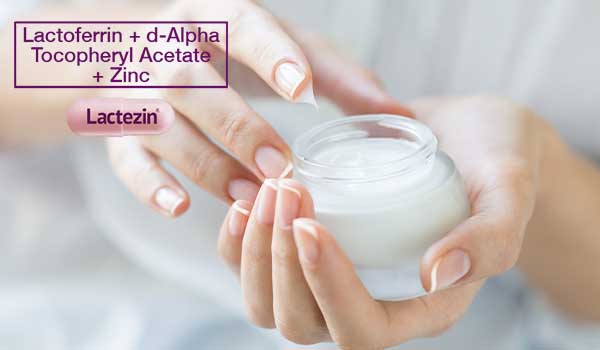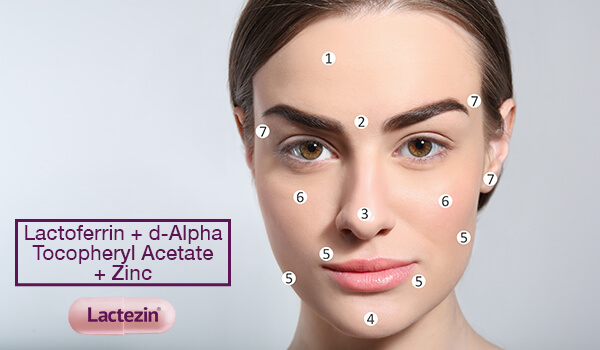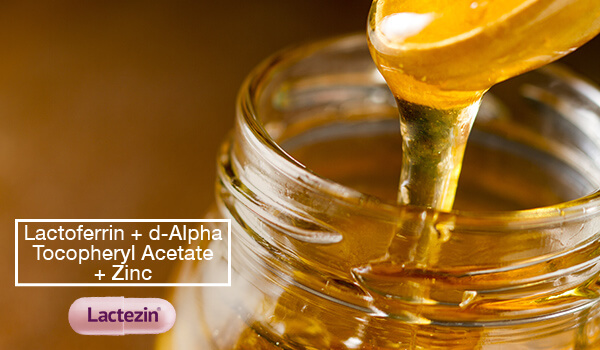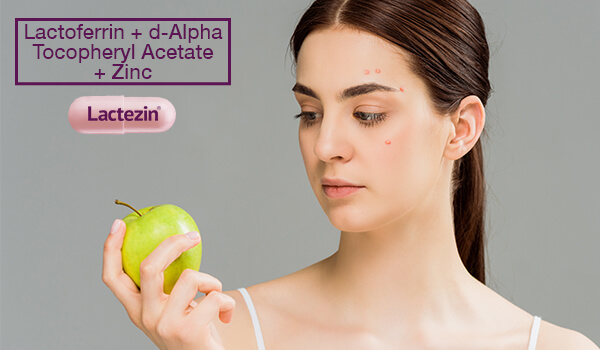6 Super Ingredients for Curing Pimples

There are many over-the-counter products that you can use to treat different types and severity of acne. But on the topic of how to cure pimples, it’s more than the variety of products that you can use. It’s knowing which ingredients work and will help you achieve clear, blemish-free complexion.
How to Cure Pimples: Working with OTC Products
Cleansing oils, lotions, gels, foams, spot treatments and more – the range of products you can use to treat or prevent acne is wide. Generally, these products promise to nurse skin to a healthy and clear appearance by killing acne-causing bacteria, exfoliating dead skin cells that clog pores, removing excess oil or decreasing inflammation.
But there is no one anti-acne miracle product that does it all. Acne products work in different ways, addressing different concerns with their active ingredients. Some products work by cleaning and killing bacteria. Others remove excess oil from the skin or speed up the growth of new skin cells. And some acne products do a combination of these things.
To help you get the desired results, take some time to pause and check or research on your products for their active ingredients.
Read the Label: What Ingredients to Look For
Reading the label of your products is always a healthy practice, not only for knowing when your item expires but also for checking what goes into it. In skincare, you would want to look for safe ingredients that are known for their skin-perfecting benefits. The following active and super ingredients can greatly help in treating pimples and acne.
- Benzoyl peroxide
Available in strengths from 2.5 to 10 percent, over-the-counter benzoyl peroxide is antibacterial and anti-inflammatory. This means that the ingredient eliminates bacteria, opens up pores and calms inflammation on the skin. Experts say that benzoyl peroxide also helps remove excess oil.
- Salicylic acid
This ingredient helps prevent clogged pores which can cause acne. A beta hydroxy acid, salicylic acid helps cure and prevent pimples by exfoliating the inside of a hair follicle. A positive side effect is that because it’s an exfoliating acid, it helps even out your skin tone and lightens dark spots and scarring.
- Alpha hydroxy acids (AHA)
Synthetic versions of acids, alpha hydroxy acids treat acne by helping remove dead skin cells and reducing inflammation. They also stimulate the growth of new and smoother skin which can help in improving the appearance of scars and pores. Some of the well-known alpha hydroxy acids are glycolic acid and lactic acid.
- Niacinamide
Niacinamide fights acne while addressing inflammation and dark spots. It is an antioxidant that’s derived from vitamin B3. Not only does the ingredient promote a pimple-free, brighter complexion, it also supports the skin’s protective barrier as well as healthy collagen stimulation.
- Retinol
Best known for their anti-aging benefits, retinol is also great for clearing up acne. The ingredient exfoliates, speeds up cell turnover and decreases in sebum production. But keep in mind that some retinol, along some retinoids can cause irritation on sensitive skin or other conditions such as psoriasis, eczema or rosacea.
- Sulfur
Often combined with other ingredients such as salicylic acid or benzoyl peroxide, sulfur helps the skin shed dead skin cells, unclog pores and remove excess oil. Unfortunately, products containing sulfur may cause dry skin. It also does not help that sulfur usually comes with an unpleasant, rotten egg odor.
Choosing and Using Acne Products
Now, how to cure pimples with these ingredients? Choose what suits your needs and build a regimen! But products and active ingredients that work on others may not work the same way for you. Check out these guidelines for choosing and using acne products:
Start with benzoyl peroxide
Benzoyl peroxide is one of the most effective when it comes to dealing with pimples acne. But be careful in terms of concentration. Higher concentration does not always mean better results, especially with ingredients like benzoyl peroxide. Its known side effects are dryness and skin irritation among other things. For a milder alternative, try salicylic acid.
Start low, start slow
Avoid suddenly subjecting your skin to new products and ingredients as this can be stressful and may lead to breakouts and damage. To minimize the chances of side effects such as redness, dry skin and others, use new ingredients in low concentration. Consider adjusting how often you use the product and ingredient too. Start with once a day, later building up to a more ideal frequency.
Avoid mixing ingredients
It can be tempting to mix products and ingredients for a more hardworking treatment, especially for treating stubborn acne. But don’t, as this can damage your skin.
Experiment safely
The true way to find out if a product or an ingredient works for you is through using it. But be careful. Best practice would be to seek the recommendation of a dermatologist.
Oral Medication for Acne and Pimple Woes
Apart from the usual products, there are also oral medications that you can choose from for curing acne. The combined benefits of ingredients lactoferrin, vitamin E and zinc should be greatly helpful as these help manage oily skin and target pimples. With continued use, Lactezin helps lessen pimples in as early as 2 weeks.
Gather more tips on how to cure pimples and get your acne questions answered with expert pimple care tips and advice, only from Lactezin.
SOURCES:
https://www.mayoclinic.org/diseases-conditions/acne/in-depth/acne-products/art-20045814
https://www.wellandgood.com/best-acne-ingredients/
https://www.everydayhealth.com/news/the-best-acne-fighting-ingredients/


